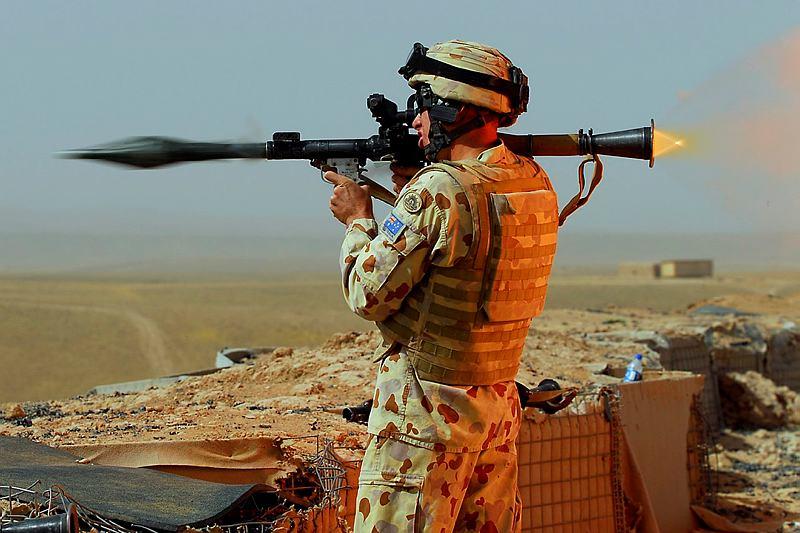Army’s future role—moving the debate further forward
Posted By Michael Clifford on March 13, 2015 @ 11:00
In a recent blog post Mitchell Yates [2] made a useful contribution to the land forces debate in Australia. But—again—when we attempt to define what the Australian Army’s role may or may not be we fall into the trap of retelling an old story and then drawing conclusions which are of questionable policy or force structure value.
Mitchell’s argument makes a connection between the current Chief of Army’s comment regarding Army reform—‘reform is about ensuring the service remains “robust and relevant into the future”’—and the unknowable future of warfare. As Mitchell observes, ‘Who knows what shape land warfare will take in the future, but must the Army be “robust” enough to confront any hypothetical future conflict?’ Without wanting to put words in David Morrison’s mouth, I doubt Mitchell’s conclusion is what he had in mind.
In an earlier blog post [3] I argued that:
Australia’s policymakers’ task is made more interesting because of (our) location; the size of (our) land mass, population and economy; and—of increasing importance—the perception held by others of Australia’s role both regionally and globally. Together those factors create a unique set of policy challenges. The input element is also made more complex because governments, notwithstanding their occasional fiery rhetoric, seem to dislike restricting the capability or output options available to future governments. Force structure decisions are critical—get them wrong and the options open to governments in the future close down quickly. That was the real issue for governments in the 90s: they had no options. That’s why balance becomes so important.
As a start point to any discussion about the Australian Army’s role, one needs to be clear about how governments see Australia’s place in the world, and what role we might—or might wish to—play in the future. Good or bad, right or wrong, since federation Australian governments have taken a global view and as such have sought to participate in global and regional events in ways that see the Australian Army as one possible part of an Australian response.
This continuity of national vision is important. It’s not just a lens through which we look at ourselves as a nation, but also a lens through which force structure decisions are made.
Again (as I said [4] recently) this is not about low-intensity or high-intensity operations. It’s about designing an Army force structure and skill set which offers government the best and broadest set of policy options to enable them to meet our national needs. Put simply, it‘s about balance; and that’s no different for Army than it is for the other services.
Patrolling, ambushing and minor infantry tactics are the cornerstone of the skills which enable the Army to respond to the government’s needs. It’s around those universal skills that the Army is equipped to survive and has the means to impose its will on an adversary. Issues of affordability and sustainability lie at the heart of the notion of ‘balance’. Experience suggests the force structure to achieve that balance and breadth of options is based around three brigades, logistics and service support and a strong Special Forces component. We can argue about the size and mix but I’d describe this as the ‘core’ force which, given economic conditions, can be tightened or expanded. When well equipped, history would suggest that it offers government the range of necessary options to meet our nation’s responsibilities over time.
In this regard the key lesson from the 1930s and again from the ‘80s and ‘90s is that hollow force structures place both soldiers and national security at risk. Limiting Army’s role to low-intensity operations and the ‘light’ forces typically associated with such missions simply limits options for future governments and puts at risk the lives of Australians when we eventually deploy them on missions and into circumstances they’re ill-equipped to be in.
It’s worth repeating [3] that a balanced force is a ruler against which policy and capability decisions can be tested. The current air package deployed to the Middle East is a wonderful example. It’s self-reliant, balanced and capable—and importantly, of a scale that meets Australia’s means. Self-reliant because it can see, sustain itself, and shoot. Balanced because it has the force elements necessary to prosecute the tasks given to it by government—and not limited just to either seeing, or sustaining or shooting. It’s capable because as a package it’s not a liability to others in the coalition but gives government a range of policy options over time based on policy grounds not capability deficiencies.
Let’s start considering the Army’s role and force structure in the same terms—to do otherwise does both the nation and the institution a disservice.
Michael Clifford is a senior fellow at ASPI. Image courtesy of Department of Defence [5].
Article printed from The Strategist: https://aspistrategist.ru
URL to article: /armys-future-role-moving-the-debate-further-forward/
URLs in this post:
[1] Image: https://aspistrategist.ru/wp-content/uploads/2015/03/20070907adf8218490_111.jpg
[2] Mitchell Yates: https://aspistrategist.ru/backwards-to-the-future-the-australian-army-after-afghanistan/
[3] blog post: https://aspistrategist.ru/defence-policy-and-industry-balance-and-options/
[4] said: https://aspistrategist.ru/army-and-armour-moving-the-debate-forward/
[5] Department of Defence: http://images.defence.gov.au/20070907adf8218490_111.jpg
Click here to print.
